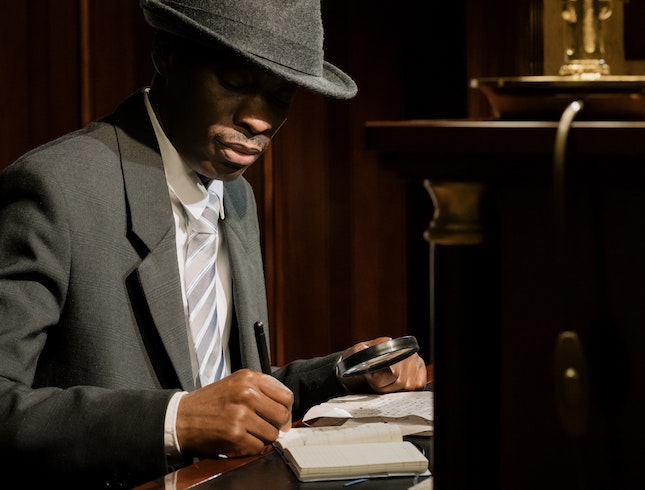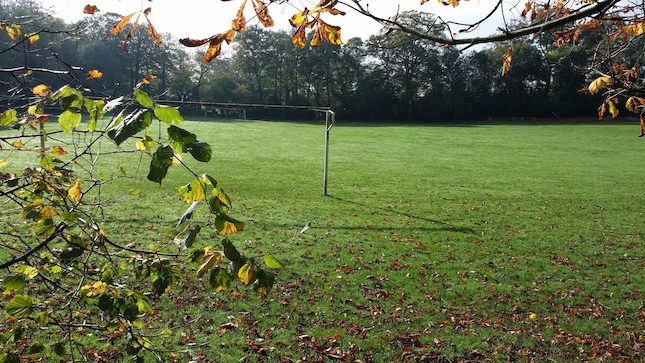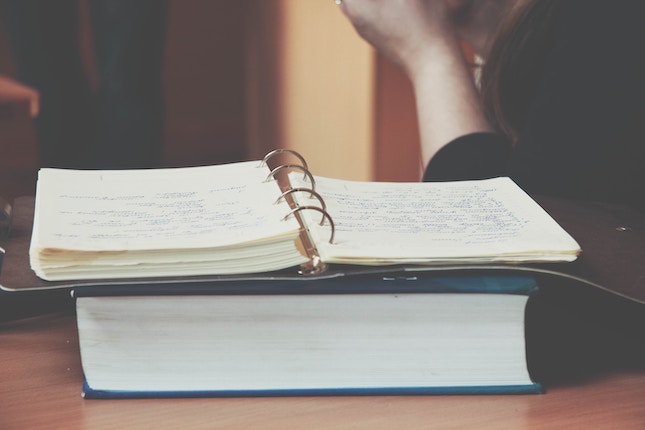Deepen Your Mystery Novel With Clues and Solve The Case At The Same Time

Mystery Novel Clues – Tiny Tidbits That Tell A Story
Used the right way, mystery novel clues, pieces of information interpreted correctly, offer the reader the chance to solve the case alongside the detective. They come in many forms and relate to multiple characters.
Clues are more than data bits. Your job as a mystery writer is to use your clues as touchstones for connecting with your reader. The more the clue embellishes the mystery puzzle, the more your reader wants to know about the clue.
You want to show the clues to give your reader an opportunity to interpret them along with your sleuth. And you want to hide them to keep your reader guessing.
Your clues are a goldmine of opportunities for you to deepen your mystery story.
Types of Mystery Clues
Because a clue is a piece of information, you can present the information in a variety of ways.
Physical Clues
This is a piece of material or object usually found at the crime scene or in the possession of the suspect. It might be the murder weapon, carpet fibers, imprints in soil, a lost button, smashed tires, discarded wrappers, a lip gloss stick—any physical object that reflects the crime.
To solve the case, the sleuth collects or notices these items.
Biological Clues
You may have planted organic traces left behind. A strand of hair, fingerprints, bodily fluids, even anything containing DNA or characteristics that can help investigators figure out what happened and whodunit.
Psychological Clues
Profilers do this in such a way: they base their investigation on clues derived from behavioral indicators.
Characteristics of a perpetrator are often identified by skilled profilers such as probable age, occupation, socioeconomic group, personality type, etc.
Additionally, an astute detective will understand the psychology of a subject, allowing him or her to draw certain conclusions.
Timing Clues
Alibis come into play here. In critical moments, sleuths often set up a timeline to keep on top of everyone’s whereabouts. This crime-solving device can be very useful, especially when the sleuth discovers a suspect’s timing error.
Background Information
As the case progresses, the sleuth will look into the background of the suspects, looking into financial records, relationships, past addresses, and places of employment—anything that might give them a clue about what
Investigations like this form the backbone of mysteries, as the sleuth discovers connections and motives.
Clues of Omission
Omitted clues comprise the absence of a clue where there should be one. It happens when something vital is missing or out of place.
Each type of clue gives your sleuth and your reader, not just information but how to interpret the information.
Relate the Clue to Story Characters
One of the best ways you can expand a clue from information bit to story significance is to relate the clue to a character.
The Villain – Most people think of clues that point toward the villain, and that is the ultimate goal of your mystery. These are the clues you want to hide in plain sight, so your reader doesn’t suspect the real villain until the end.
The Victim – Use the clue to illuminate an aspect of the victim that adds to your sleuth’s understanding of the victim’s character or relationship to a suspect. These clues help your sleuth expand their understanding of the victim and their relationship with other characters.
Suspects – You will deepen your story when you use clues to point to the wrong suspects, adding conflict and creating tension for your reader. A clue from one suspect can point to another suspect, either correctly or incorrectly.
So, rather than using clues as simple data bits, you can use the various types of clues and relate them to different characters in your mystery.
Your Detective’s Skills With Clues
Your detective, the protagonist of your mystery, is your reader’s guide through the mystery puzzle. How your detective examines, considers, and interprets each clue is your opportunity to deepen both your detective’s character and how they lead or mislead your reader.
For example, your detective gets a tip. They don’t have to take the tip at face value. How your detective evaluates the person who gave the tip is one way to show your reader your detective’s procedure for evaluation. Then your detective must evaluate the relevancy of the tip (clue) itself.
And here you can play. Does the tip reveal something about another character? Or introduce another suspect? Or shift the possible guilt from one suspect to another? Or twist everything the detective has thought so far?
Clues are a wonderful device for demonstrating how your detective works.
Clues and Moral Consequences
Give your detective dilemmas where they must make a choice. When you give your character a belief system and test their actions against their convictions, you heighten tension. You supply your reader with a look at the character’s belief system and how the character operates in their world. Empathy and tension are two strong pulls to reader engagement.
A clue that drives your detective to make a choice has the power to turn the story, go deeper into your character’s emotional makeup, and build suspense because your reader questions how your detective will make the choice.
The process of how your detective makes the choice, reveals their character. As you share this dilemma with your reader, you provide an opportunity for them to connect emotionally with your protagonist.
Use Clues as Springboards for Your Mystery Story
Writing a mystery involves creating a puzzle and challenging your protagonist. If you use your clues to add new meaning and deepen character you’ll go far beyond just pieces of information. And you’ll integrate your clues into the story so they have meaning for your readers.
Photo by cottonbro





